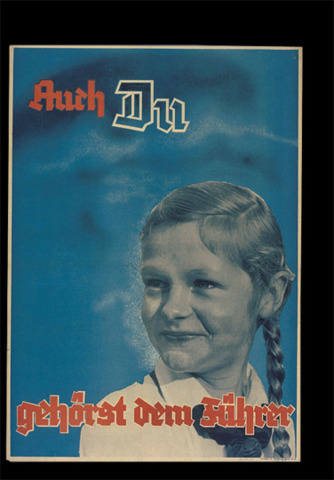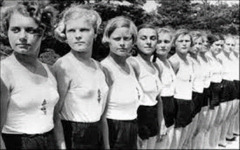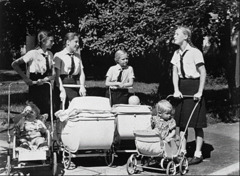The girls, divided into two groups by their age (younger, 10 to 14, and older, 15 to 21 years old), were also required to pass certain physical tests. For example, they had to run 60 metres in twelve seconds, jump more than 2.5 metres, throw a ball over a distance of 20 metres, swim 100 metres and complete a two-hour route march. Other physical requirements included somersaulting and tightrope walking. The BDM organized many different outdoor activities.
Nazi propaganda, such as the poster shown on the other side of this card, emphasized that the ultimate goal of the League of German Girls was to prepare its members for their role in German society: the role of a wife, mother, housewife and communal volunteer. Their typical after-school activity was to take children from large families for a walk in the park while their mothers were at work.
Ilse McKee wrote about her experiences in the League of German Girls in her autobiography, Tomorrow the World (1960):
“We were told from a very early age to prepare for motherhood, as the mother in the eyes of our beloved leader and the National Socialist Government was the most important person in the nation. We were Germany’s hope in the future, and it was our duty to breed and rear the new generation of sons and daughters. These lessons soon bore fruit in the shape of quite a few illegitimate small sons and daughters for the Reich, brought forth by teenage members of the League of German Maidens. The girls felt they had done their duty and seemed remarkably unconcerned about the scandal.”


